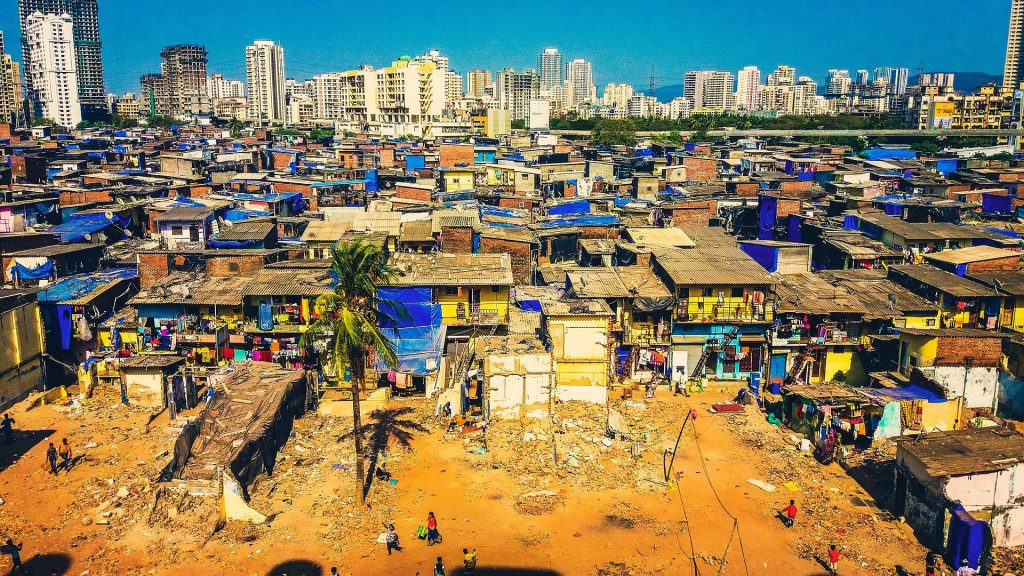Leonie’s host father invites her to join him in his work for the day. On their way to the IT firm, Leonie notices a big collection of lived-in sheds surrounding the entrance to the central city. When asked about this, her companion sadly nods and begins explaining the economic struggles that lead to and are caused by poverty in India.
Since India´s independence from Britain in 1947, it has had mixed economic systems. Influenced by the Soviet System they first planned their economy with five-year plans. Later India adopted several free-market reforms, which led to a growing middle-class. Because of its well-trained workforce, India became one of the major global centres in the high-technology boom in the 20th century.
Economic Gap
India is among the most unequal countries worldwide. Twenty years ago, the nation´s top 10 percent held around 60 percent of India´s wealth. These days this share is 70-80 percent.

Experts name different reasons for the huge wealth gap in India. Several think that technology requires special skills. Workers who aren´t highly educated don´t experience an increase in productivity or wages like those who can use technological experience. This is a vicious cycle because the surge in productivity influences the increase in technology who requires more highly educated workers. Furthermore, new technologies replace jobs in the middle class. This leads to a gap in wealth and income. Moreover, most of the returns from the increase in technology go directly to the capital instead of labour. Another reason might be that a large part of the labour force works in sectors like agriculture who have low productivity. Agriculture still is India´s main employer but only contributes around 18 percent to the gross domestic product (GDP).
Main contributors to India´s GDP in 2020
(data from:https://www.statista.com/statistics/264653/proportions-of-economic-sectors-in-gross-domestic-product-gdp-in-selected-countries/ published by Aaron O´Neill on August 4, 2021)
Impact of Covid 19
India was severely affected by the coronavirus and harsh measures such as long lockdowns shuttered the nation´s economy. In the second quarter of 2021 India´s GDP rose for a record 20.1 %. At the same time in the year before, the GDP contracted by around 24 %. Then another wave of the pandemic, probably caused by the Delta variant, hit India with thousands of deaths every day. Prime Minister Narendra Modi refused another lockdown as the first one led to the first recession in years. However, the second wave still had a negative impact on the economy as it is expected that the GDP contracted again by approximately 12% in the following quarter. Positive signs are the increase in the vaccination rate and that especially exports contribute to growth in the domestic economy.
A consequence of poverty : Child Labour
As reported by International Labour Organization (ILO), approximately 12.9 million children between 7 and 17 years are exploited for cheap labour in India. ILO estimates 10.1 million working children from age 5 to 14. As many children work secretly and not every working child is reported, the exact number is probably even higher.
Many of those children are engaged in agriculture, for example they work on cotton plantations or rice fields. They are exposed to the danger of toxic pesticides and exhausting work. Other forms of child labour are working as service staff in restaurants or working in dangerous mines. A huge percentage sells cigarettes on the street or helps build factories for the textile industry. Around 1.2 million children are involved in sexual exploitation, which is one of the most terrible forms of child labour.
The main cause for child labour in India is extreme poverty. At least a third of the population lives below the poverty line. Technical innovations have not created a lot of jobs among the poor citizens. Especially the large rural population with only little education often do not know another solution than letting their children work to be able to feed the family. In the worst case, parents sell their children to child traffickers or abandon them in rural areas while searching for a job in the cities.
Most of the 12 to 17 years old teenagers work up to 16 hours per day. They can´t go to school, which keeps them in the cycle of poverty. Abandoned children suffer from severe trauma and are extremely vulnerable.
In 1993, the government introduced a law that interdicts dangerous work or activities that have a negative impact on the children´s mental or spiritual health or their social development. However, people find loopholes, as it does not prohibit child labour in the family business or business leaders, for example mine owners, are also in political office and therefore can influence the law. Other laws from 2006 and 2016 stop children under the age of 14 from working as service staff or domestic workers.
Leonie spends the day with her host father, learning about the important work he does for his company, helping people who struggle with the company’s software. After even being allowed to call a person herself, Leonie goes home feeling happy and fullfilled.